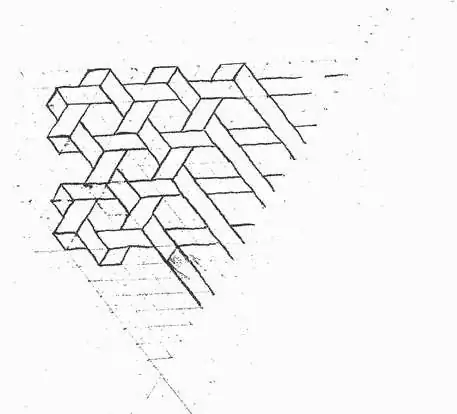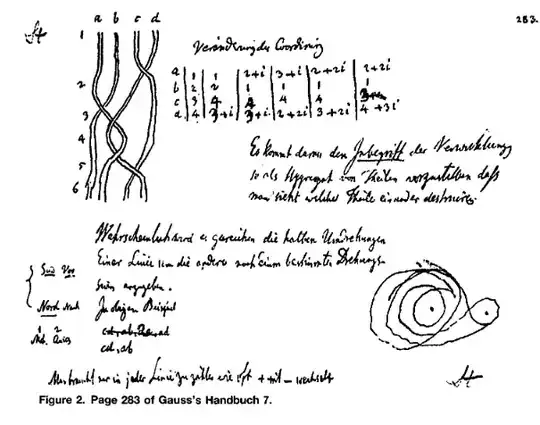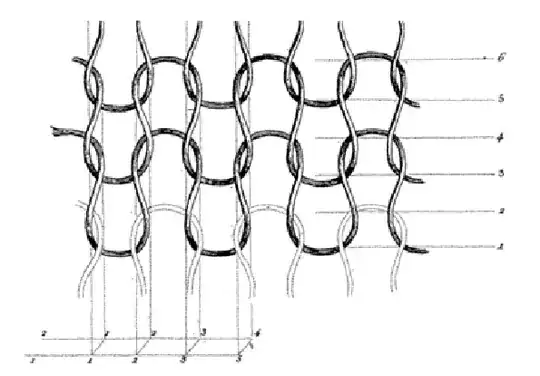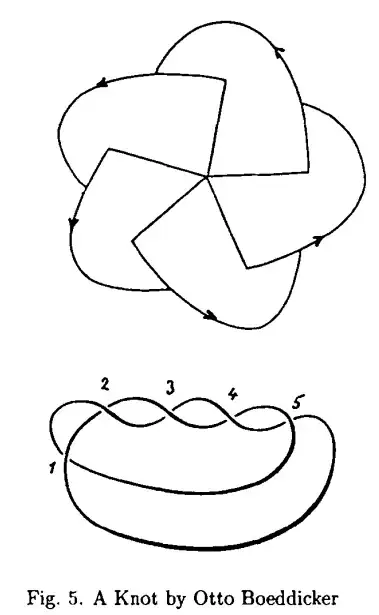Cross-posted from HSM: I posted this question a bit more than a week ago but have not gotten any answers at HSM. The only comment on the posting asks if I would accept polyhedral pictures illustrating the Euler characteristic -- the answer is "no".
EDIT 2023-08-15: Several commenters have asked me to sharpen the original question. I've now tried to do that.
Papers and books in geometry have been using illustrations for ages - for example there are figures in papyrus rolls containing bits of Euclid's Elements. My question, then, is
What are some of the earliest non-trivial illustrations of topological ideas appearing in published mathematical articles?
I am particularly interested in tracing the history of illustration in modern geometric (or "low-dimensional") topology. So I am mostly looking for early pictures of knots and surfaces (and three-manifolds - I give an example due to Poincaré below). But all examples are welcome!
Examples and non-examples:
Non-example: The diagrams in editions of Euclid are always slightly wonky - drawing the Platonic ideal circle is impossible! So they are topological illustrations of geometric ideas.
Example: The Heegaard diagram [Figure 4] in the fifth supplement to Analysis Situs [Poincaré, 1904]. It is not clear how Poincaré found this example and it is not clear how else he might have communicated the information.
Non-examples: The various carved Celtic knots, or braids appearing as the frames of mosaics, or the coat of arms of the House of Borromeo, or metal links made of many unknots, or indeed textile arts (much older than publishing and, indeed, writing). Of course such artefacts are important, mathematical, and ancient. But it is impossible to point at one of them and say "this was the first one". This is why (perhaps wrongly!) I have restricted to "published" papers.
Non-example: Euler's diagram [1735] of the bridges of Konigsberg does not count. This is because (I feel that) (a) it is a bit too close to a literal (as opposed to topological) figure and (b) graph theory is more properly a subfield of combinatorics, rather than of topology. (Of course, some people (such as Euler) disagree with (b).)
Example: Listing's figures of knots [1848] in Vorstudien zur Topologie. The classic example, inspiring Tait's work on knot tabulation.



